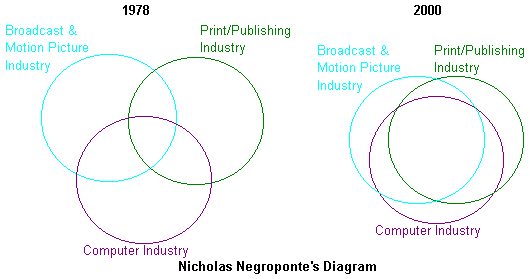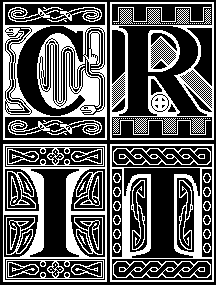Colleges and universities today find themselves immersed in technology. Over the past decade, the demand for computing power for research and instruction has resulted in the creation of thousands of faculty research labs, special purpose discipline-centered computing labs, remediation facilities, and vast public access labs for word processing, document processing and other generic computing tasks.
It is hardly contentious to question whether all of this growth has been effectively centered on improving education in the disciplines. The early eighties heralded the phenomenal explosion of microcomputers on campus, and while the decade has certainly seen the integration of personal computers into the scenery of the modern university, it is less certain that the integration is more than merely an added convenience for the scholar, rather than a tool for learning, or a tool for changing learning.
The good news, of course, is that the installed base of microcomputer workstations on campus continues to enlarge. In fact, in the United States, that base has doubled since 1986, and continues to grow.1 There is also no question that personal computers, unlike their large multiuser predecessors, have made computing a pervasive part of university life. And the application that has made virtually everyone a believer in computing technology is word processing. It is a simple task, but one that all of us, faculty as well as students, require as an essential part of our educational task. The success of the microcomputer, and its resulting ubiquitousness in educational institutions, is thus assured as well as enthusiastically welcomed. Stewart Brand, in The Media Lab, puts it this way. “Marshall McLuhan used to remark, ‘Gutenberg made everybody a reader. Xerox made everybody a publisher.’ Personal computers are making everybody an author. E-mail, word processing programs that make revising as easy as thinking, and laser printers collapse the whole writing-publishing-distribution process into one event controlled entirely by the individual.”2
And computing has made progress in the disciplines. Higher education science and particularly engineering labs now assume computing tools are available for analysis and evaluation of lab experiments. Indeed, for many disciplines, microcomputers figure prominently in the lab procedure itself.3 Business Schools could no more do without spreadsheets and data base applications than economics texts. Writing and Composition labs use the tools of word processing, and satellite grammar and spelling routines to reach for the larger goal of effective, reasoned, and persuasive discourse.
But, as we enter the 1990s, the potential of the computer to alter how we learn, teach, and perhaps even think, is just as far away as it was 10 years ago. A recent article in the Chronicle of Higher Education, a major U. S. higher education news weekly, underscored the issue at hand.4 The article reported work in progress for the EDUCOM Software Initiative subcommittee for scholarly reviews of educational software. The Software Initiative project, under the leadership of Steven Gilbert, was founded in 1986 to provide a nationally focussed effort aimed at the creation and dissemination of software for higher education. The “Scholarly Reviews of Academic Software” subcommittee, charged with the task of providing learned reviews of software developed specifically for educational disciplines, has been struggling for some time to produce model reviews of software that address both the scholarship and instructional possibilities of the software.
Sadly, subcommittee members found little software to meet both criteria. Jack Chambers, chairperson of the subcommittee, put it this way: “…the best software we could recommend for review… was not very scholarly. …Much, if not most of the available academic software… simply does not alter underlying concepts in this field.”5 Nigel Gardner, a member of the group, asserted that “the word ‘scholarly’ is a noose around our neck…”.6 In short, members of a national group committed to the integration of technology into the fabric of higher education have concluded that little academic software exists that is truly innovative in altering concepts within a discipline.
So, while computers continue to proliferate on campus, the quality of available software fails to impact the learning process itself. Word processors, spreadsheets, statistical routines, data base applications —all greatly ease the acquisition and articulation of information, but their impact has hardly been akin the advent of Gutenberg’s press, as more than one prophet has been asserting. The sad fact is that the impact of the personal computing era is more akin to the introduction of the typewriter—it’s a tool we welcome, and couldn’t do without, but its usefulness extends only so far as to make a primary task easier and more effective. It has yet to broaden our ways of knowing, learning, and thinking. That, in a nut shell, is the bad news.
As we enter the next decade, then, the task that confronts university computing services worldwide is not how to make computers part of the university landscape. The primary goal for the 1990s is to cultivate an environment using computing that integrates applications into learning processes within the disciplines themselves. It is our contention that this integration must be carefully developed within the disciplines themselves; thus, the role of computing services is a cooperative one —to provide the seed and incentive for a discipline to put the time and effort into using (or even developing) applications that further specific educational goals, and then to support and encourage this development. We call this effort “cooperative computing”.
A brief description of what we mean by “cooperative computing” is perhaps in order. First, it is not characterized by either decentralized or centralized facilities. These terms tend to promote mild paranoia in both computer centers and academic departments. Over the past decade, academic disciplines as well as computing centers have matured in their understanding of their respective roles. Computing can’t be forced on a department from without. Similarly, computing centers typically do not have the expertise within a discipline to decide what a given academic department may or may not require. On the other hand, computing centers certainly fulfill a service role in researching and demonstrating relevant software, and they can play a key role in maintaining systems for the department. In this way, both areas benefit.
But cooperative computing goes beyond this. Computing services must work to understand the unique computing and instructional goals of the discipline; the result of this effort should effect broad curricular changes within the discipline aimed at integrating the tools of computing into new ways of learning, knowing, and thinking in the discipline.
“Personal computing has tended to stimulate individual creativity of faculty rather than collaboration between them.”7 To carry this observation one step further, personal computing, while stimulating individual creativity in faculty, has not stimulated student and faculty interactions within the disciplines. This is what “cooperative computing” should do. The remainder of this paper will address opportunities favorable to fostering the development of computing as a vehicle for news ways of learning within the disciplines.
First, what long term trends are favorable for the fostering of a cooperative computing environment in academia? There appear to be a least four.
-
Professor Nicholas Negroponte’s late 1970’s prediction of the blending and growing intersection of the Broadcast and Motion Picture industry, the print & publishing industry, and the computing industry8 has been realized.

At the public policy level, this trend has produced significant social and political rethinking regarding the notions of copyright and intellectual property rights (a superb exposition of these issues may be found in the book Technologies of Freedom, by Ithiel deSola Pool);9 on the personal level however, Professor Negroponte’s “reality” means that the individual him or her self is in a position to control the tools of authorship. The implications for the scholar are immense. Creativity and its articulation are vastly enhanced for the scholar-educator, from the creation of so called “shrink wrapped” course texts developed and compiled by the instructor specifically for a given course to the production of first rate research articles in the scholar’s own field.
-
While hardware components decrease in price and the low end personal computer market continues to grow, the high end graphics and processing intensive computer “workstation” market has experienced phenomenal growth.
As the cliché says, “today’s high end workstation is tomorrow’s personal computer.” As the cost of hardware drops, more and more individual users are able to afford machines with increased memory, speed, storage, and more sophisticated software applications. The important trend to be noted here, however, is that the researcher/educator of the 1990s can be expected to have access to more sophisticated hardware and software applications—increasingly productive tools for enhancing knowledge. An imaginative, if somewhat futuristic, look at “tomorrow’s scholar’s workstation” may be found in John Sculley’s opening address to EDUCOM, in 1987.10
-
In the United States as well as in developed countries around the world, there is a growing trend toward the establishment of national networks linking higher education and research institutions across the country and worldwide. In the U. S., the latest effort is the NSFnet initiative.11
For the educator, a national network greatly enhances the ability of the researcher and teacher to share information, data and even computing resources with colleagues spread across the entire continent, even world. Increasingly, research depends on collaborative work at many institutions, and a national network would greatly facilitate this collaboration.
The American effort, NSFnet , building on existing regional nets, already exists in part, and the first phase is scheduled to be in place by 1990. The implications for cooperative computing efforts on a national scale are immense. While the emphasis for the network is aimed at science and technology information transfer, the network will facilitate research across a wide variety of disciplines.
-
Most medium to large scale universities have computerized or are in the process of computerizing their library holdings.12,13
Very little short of salary determination excites faculty more than ease of searching and access to the library holdings. While computerized library holdings are hardly new, many medium to small scale colleges and universities have only recently begun to computerize their holdings. Even in the larger schools, it is the campus networking developments over the past five years that have brought the catalog to the researcher’s office. Thus, as more and more libraries computerize, the networks currently being established in colleges and universities across the United States will provide a powerful medium for access to library information resources.
Footnotes
- Torrey Byles,Academic Computing Comes of Age, Wilson Library Bulletin, February 1989 Vol 63, no. 6, pg21-28.
- Stewart Brand, The Media Lab (New York: Viking Press, 1987), pg. 253.
- Steven W. Gilbert and Diane Pelkus Balestri, et al, Ivory Towers, Silicon Basements, (EDUCOM/Academic Computing Software Initiative Monograph Series, 1988), p 27.
- Judith Axler Turner, Panel Fails to Devise a System of Scholarly Reviews for Academic Software, (Chronicle Of Higher Education,Vol XXXV, no. 49, August 16, 1989), pg A13.
- Ibid.;
- Ibid.;
- Gilbert et al., loc. cit., pg 28.
- Brand, loc. cit., p. 10.
- Ithiel DeSola Pool, Technologies of Freedom, (Cambridge, Mass: Harvard University Press, 1983).
- John Sculley, The Knowledge Navigator, Keynote Address —EDUCOM, 1987
- EDUCOM Bulletin, The Strategic Importance of a National Network, Summer/Fall 1988, Vol. 23, No. 2/3, pp. 3-7.
- Library Systems Newsletter, Vol. IX, No. 2, Feb. 1989, pp. 9-10.
- Library Journal, April 1, 1989, pp 41-52.
